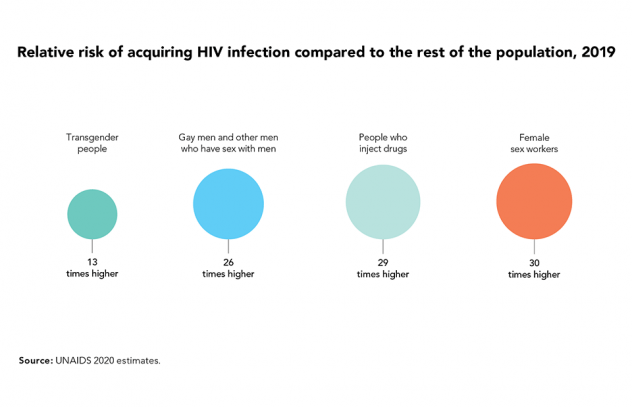Key populations constitute small proportions of the general population but they are at higher risk of getting HIV, largely due to criminalization, discrimination and social exclusion. UNAIDS published their estimations for relative risk of acquiring HIV infection and distribution of new HIV infections by population for 2019.
In 2019, the proportion of new adult HIV infections globally among key populations and their sexual partners was 62%. This shift to an HIV epidemic increasingly among key populations is a result of the strong progress in HIV prevention in settings with high HIV prevalence in eastern and southern Africa, combined with a mixture of progress and setbacks in lower-prevalence regions.
Key populations – which include sex workers, people who inject drugs, prisoners, transgender people, and gay men and other men who have sex with men – constitute small proportions of the general population, but they are at elevated risk of acquiring HIV infection, in part due to discrimination and social exclusion.
Comparing to recent estimations, especially in the region of South East Europe, this is a significant increase of risk for the population of people who use drugs.


